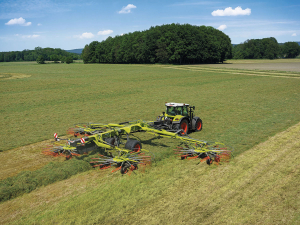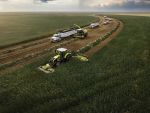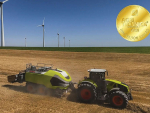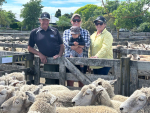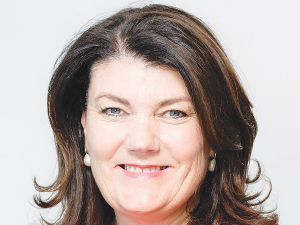Claas' next generation four-rotor Liner swathers offers four models with working widths from 9.3 to 15m and feature telescopic arms, excellent ground contouring, ease of operation and a low transport height.
The telescopic arms extend and retract via a patented threestage system for rapid adjustment of the working width.
“Depending on the model, the width of each swath can be adjusted from 1.3 to 2.5m and the overall working width from 3.4 to 4.9m,” says Claas Harvest Centre product manager – Claas, Luke Wheeler.
The more basic Trend configuration sees swath width adjusted manually using a simple springloaded lever, while raking height is adjusted using the crank handle on each rotor. In the premium specification Business configuration, working width, swath width and rotor lift are all hydraulically controlled using the ISOBUS-compatible terminal inside the cab.
The layout of each model sees four equalsized rotors that operate at the same speed, allowing for optimal interplay between the wide-raking front rotors and the rear rotors, which handle a larger volume of forage, to ensure maximum throughput, uniform swathing and minimal contamination.
Each rotor drive assembly is continuously lubricated and hermetically sealed for maintenance-free operation with friction clutches protecting each rotor against overload and allow work to continue non-stop even during load peaks. Claas claims the mechanicallydriven rotors have 50% more raking force than hydraulic drives.
The shaft speed in the two gearboxes on the main frame has been reduced from 540 to 350rpm, with the freewheel of the drive shaft positioned directly inside each gearbox, enabling the rotors to rotate freely in transport position.
Trend models are configured so each rotor is supported by a fourwheel chassis, while Business variants have a six-wheel chassis and wider tyre equipment. The support wheels are positioned as close to the circle of rotation of the tines as possible to optimise ground contact and smooth rotor guidance.
“The upgraded floating cardan suspension system enables the rotors to move in three dimensions as they are pulled across the field,” Luke says. “Only 20 percent of the weight is applied to the front rotor wheels, enabling optimum ground-contour following by the rotors.”
Front and rear rotors can be raised and lowered in succession by sequential control, with the rear rotor wheels touching down first, which prevents the tines from digging in and damaging the grass sward.
The 57mm diameter tine arms are firmly attached by a 20-spline shaft and secured with a bracket, and integrate a pre-defined bending point to provide protection for the rotor housing in the event of a collision. Each arm is fitted with four 9.5mm dual tines, offset by 10 degrees to help crop lift, which are secured via a bolt.
All four-rotor Liner swathers fold to a 4m transport height without having to remove the tine arms, with a transport width below 3m and foldable rear light arms to negotiate narrow entrances. Up front, a new two-point hitch has maximum turning angle of 80 degrees, allowing tight turning manoeuvres, while a semi-automatic stand and parking bracket with colourcoded hydraulic hose connections simplifies attachment and removal to the tractor.

